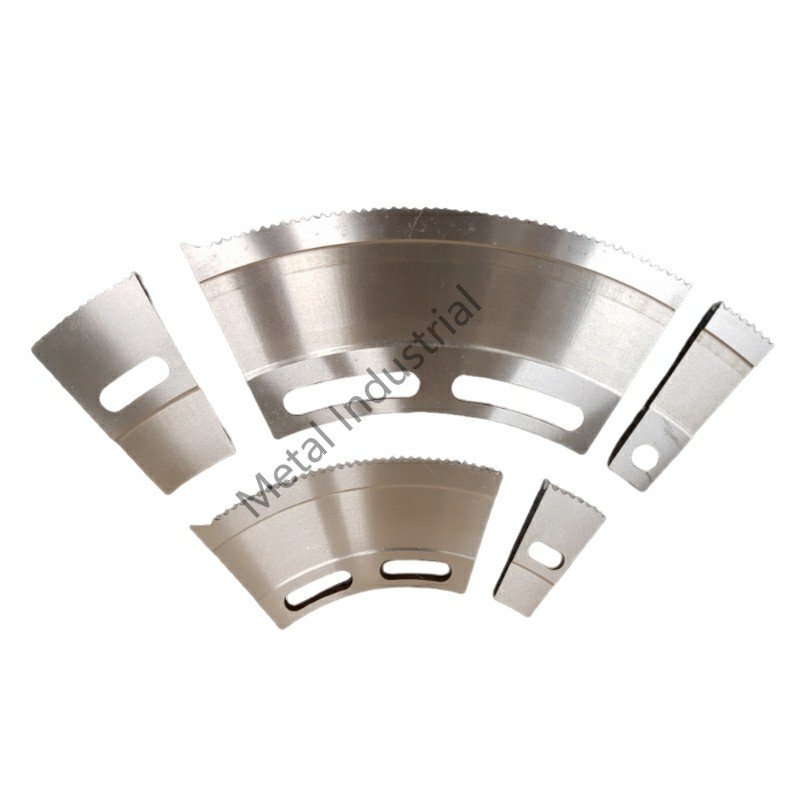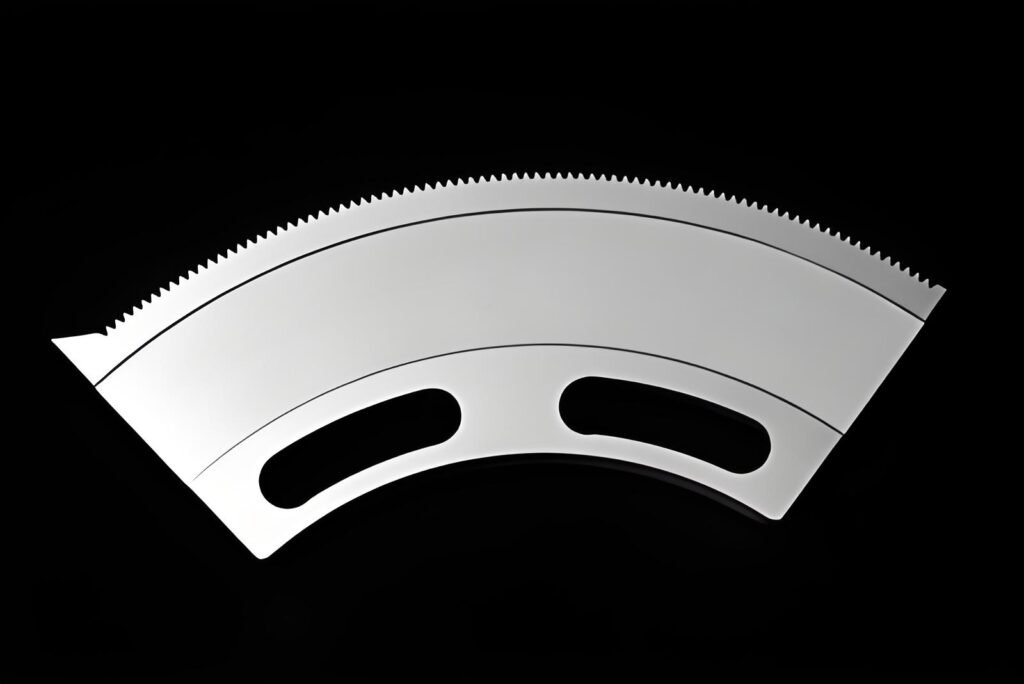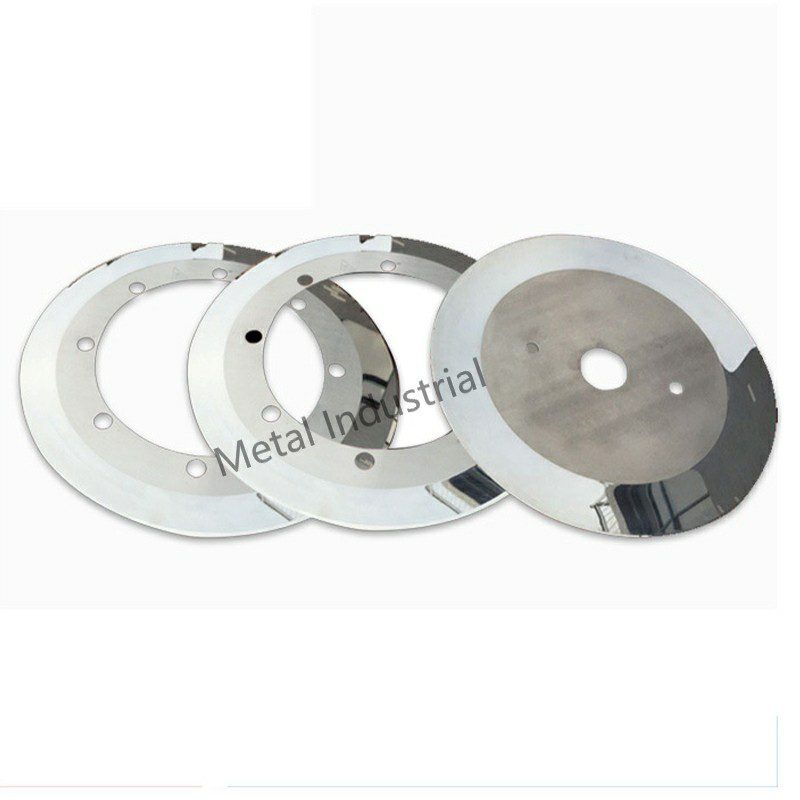Riepilogo:
Coltelli rotanti per scanalatura are essential components in carton slotting machines, ensuring precision and high efficiency in manufacturing. This comprehensive guide explores the installation and adjustment of rotary slotter knives, providing step-by-step instructions, troubleshooting tips, and maintenance advice to help you achieve optimal performance.
Understanding Rotary Slotter Knives
Rotary slotter knives play a crucial role in the production of corrugated cardboard boxes. These industrial cutting tools are designed to make precise slots in cardboard sheets, forming flaps that allow the box to be folded into shape. Properly installed and adjusted knives ensure clean cuts, minimal waste, and increased efficiency in manufacturing.
What Are Rotary Slotter Knives?
Rotary slotter knives are cylindrical cutting tools mounted on rotary shafts within slotting machines. They rotate at high speeds, slicing through cardboard with precision. These knives are typically made from high-strength materials like tungsten carbide or tool steel, which offer durability and sharpness.
Key Components of a Rotary Slotter Knife System
A rotary slotter knife system includes:
- Knife Blades: The primary cutting component, designed for precision.
- Knife Holders: Secure the blades and ensure proper alignment.
- Adjustment Mechanisms: Allow fine-tuning of blade position and depth.
- Rotary Shafts: Provide the rotational force required for cutting.
By understanding these components, operators can identify potential issues and perform efficient adjustments or replacements.

Tools and Preparations for Installation
Essential Tools Needed for Installation
Installing rotary slotter knives requires the right tools to ensure accuracy and safety:
- Hex Wrenches: For loosening and tightening screws.
- Alignment Gauges: To check the knife’s position and ensure even cuts.
- Protective Gear: Including gloves and goggles for safety.
- Lubricants: To reduce friction during installation.
Safety Measures to Consider Before Installation
Safety is paramount during the installation process:
- Turn off the slotting machine and disconnect it from the power source.
- Inspect the knife blades for damage or wear before installation.
- Always handle the knives with gloves to avoid injuries.
- Ensure the work area is clean and well-lit.
Proper preparation minimizes the risk of errors and accidents during installation.
How to Install Rotary Slotter Knives
Step-by-Step Installation Process
- Prepare the Machine: Turn off the power, remove the old blades, and clean the mounting area.
- Align the Knife Holders: Use alignment gauges to position the holders correctly.
- Attach the Knives: Secure the rotary slotter knives in place using the hex wrenches. Tighten screws evenly to avoid misalignment.
- Test the Fit: Rotate the shaft manually to ensure the knives move smoothly without obstruction.
- Calibrate the Depth: Adjust the blade depth based on the cardboard thickness.
Common Mistakes to Avoid During Installation
- Overtightening Screws: This can warp the blades, leading to uneven cuts.
- Skipping Calibration: Failing to adjust blade depth may result in improper slots.
- Ignoring Blade Alignment: Misaligned blades can cause excessive wear and poor cutting quality.
Careful attention to detail during installation improves cutting accuracy and prolongs blade life.

Adjusting Rotary Slotter Knives for Optimal Performance
Factors Influencing Performance
Several factors affect the performance of rotary slotter knives, including:
- Blade Sharpness: Dull blades produce jagged cuts and increase wear on the machine.
- Allineamento: Misaligned knives can damage the cardboard or the machine itself.
- Velocità di taglio: Operating at inappropriate speeds may reduce efficiency or cause overheating.
How to Achieve Precise Adjustments
- Inspect the Cut Quality: Check the slots for clean edges and consistent depth.
- Fine-Tune Blade Position: Use adjustment mechanisms to shift the knives slightly as needed.
- Prova: Conduct a trial run with sample cardboard to verify adjustments.
Signs of Improper Adjustment and How to Fix Them
- Ragged Cuts: Indicate dull or misaligned blades; sharpen or realign them.
- Uneven Slots: Suggest incorrect blade depth; recalibrate the depth settings.
- Machine Vibration: May result from improperly secured blades; tighten all screws and ensure balanced alignment.
Regular adjustments enhance productivity and reduce the likelihood of costly machine downtime.
Maintenance Tips for Longevity
Regular Inspection Procedures
To extend the life of rotary slotter knives:
- Inspect the blades daily for chips, cracks, or dull edges.
- Check the alignment and depth settings weekly to ensure consistent performance.

Maintenance Checklist for Rotary Slotter Knives
Keeping rotary slotter knives in optimal condition requires a structured maintenance routine. Below is a detailed checklist to guide operators through essential maintenance tasks:
Daily Maintenance
- Inspect Knife Blades:
- Look for signs of dullness, chipping, or cracks.
- Verify that all blades are securely mounted.
- Pulisci le lame:
- Wipe down the knives with a soft cloth to remove cardboard residue.
- Check for any buildup that could interfere with cutting precision.
- Check Alignment:
- Use an alignment gauge to confirm that the blades are positioned correctly.
Weekly Maintenance
- Lubricate Moving Parts:
- Apply a machine-grade lubricant to the rotary shafts and adjustment mechanisms to ensure smooth operation.
- Test Blade Depth:
- Use sample cardboard to confirm that the slot depth is consistent across all blades.
- Tighten Screws and Fasteners:
- Ensure that all screws, bolts, and blade holders are secure to prevent misalignment.
Monthly Maintenance
- Sharpen Blades:
- Remove the knives and sharpen them using a professional grinding tool or service.
- Ensure that the sharpening process does not alter the blade geometry.
- Inspect Adjustment Mechanisms:
- Check for wear or damage in the fine-tuning systems, replacing parts if necessary.
- Evaluate Performance:
- Analyze output quality for signs of declining performance, such as uneven slots or frayed edges.

Quarterly Maintenance
- Sostituire le lame usurate:
- Swap out blades that no longer meet performance standards despite regular sharpening.
- Perform a Full System Check:
- Inspect the entire slotting machine for any mechanical issues that could impact blade performance.
By following this checklist, operators can ensure that rotary slotter knives perform reliably and remain durable over time.
Cleaning and Lubrication Guidelines
- Wipe the blades with a soft, damp cloth to remove dust and debris.
- Apply a thin layer of lubricant to prevent rust and reduce friction.
When to Replace Rotary Slotter Knives
- Replace blades when sharpening no longer restores cutting efficiency.
- Look for visible signs of wear, such as uneven edges or cracks.
By adhering to a maintenance schedule, operators can avoid unexpected disruptions and maintain high-quality output.

Troubleshooting Tips for Rotary Slotter Knives
1. Problem: Knives Producing Uneven Slots
- Cause: Misaligned blades or incorrect depth settings.
- Soluzione:
- Adjust the blade holders to align all knives evenly.
- Recalibrate the depth settings using a test sheet of cardboard.
2. Problem: Excessive Blade Wear
- Cause: Overuse, improper material handling, or insufficient lubrication.
- Soluzione:
- Sharpen or replace blades as needed.
- Ensure proper lubrication of all moving parts.
- Avoid overloading the machine with thick or double-layer cardboard.
3. Problem: Machine Vibration During Operation
- Cause: Loose blades or unbalanced alignment.
- Soluzione:
- Tighten all screws and fasteners securing the blades.
- Use alignment tools to verify proper balance.
4. Problem: Fuzzy or Incomplete Cuts
- Cause: Dull blades or excessive cutting speed.
- Soluzione:
- Sharpen the knives or replace worn blades.
- Reduce the machine’s cutting speed to recommended levels.
Implementing these troubleshooting tips ensures uninterrupted production and consistent results.
Conclusion: Maximize Efficiency with Rotary Slotter Knives
Proper installation and adjustment of rotary slotter knives are essential for achieving optimal performance in carton manufacturing. By following the steps outlined in this guide, operators can ensure clean cuts, reduce machine wear, and maintain high productivity levels. Regular maintenance and troubleshooting further extend the lifespan of the knives, minimizing downtime and enhancing overall efficiency.
For expert advice or high-quality rotary slotter knives, contattaci oggi and let us help you achieve seamless operations!


